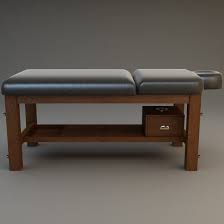If you’re a client at Life Care Wellness you may have noticed the presence of what appear to be massage tables in some of the therapy offices. Are we offering massage now? No, afraid not. So what are the tables for then? Touch can be one aspect of Somatic Experiencing (SE), a type of therapy developed to treat trauma and regulate the autonomic nervous system. The SE therapist, who has had special [pardon the pun] hands-on training in touch, uses touch to more directly intervene with the client’s nervous system. The table provides the best access to the client’s body while ensuring comfort for the SE touch therapist.
So how does SE touch work? Think of it is like this. You’ve probably seen a caregiver picking up a crying infant. If the caregiver is calm, the baby inevitably quiets fairly quickly (barring of course specific needs like feeding or changing). But if the caregiver is anxious or upset, the infant struggles to calm down.
So in much the same way, the SE therapist uses her regulated nervous system to help bring regulation back to the client’s nervous system. This happens through an entrainment process between the two nervous systems via touch. With support from the outside, the client’s nervous system can again regain regulation that is responsive to the environment, rather than staying “stuck” in dysregulation. This “stuckness”, frequently a result of trauma, can be on the sympathetic side of the nervous system (e.g. anxiety, panic, etc.), on the parasympathetic side (e.g. depression, shut-down, etc.), or occurring on both sides (e.g. bipolar, medical syndromes, etc.). The goal is flexible and flowing regulation – which is the way the nervous system is designed to work.
So what does an SE touch session look like? After a short time of checking in at the beginning of the session, the client is invited to lie down (fully clothed) on the table face up. The therapist ensures the comfort of the client, allowing the client’s body to relax (a necessary component of moving toward regulation). So pillows, bolsters and blankets are frequently used. Once the client is feeling comfortable and the SE therapist is feeling settled, the SE therapist asks for permission to touch the client.
Typically the first contact will be the therapist sliding her hand under the client’s clothed back to directly below one of the kidneys, near the spine in the mid-lower back. Why the kidneys? The kidneys are topped by the adrenal glands, which produce cortisol and norepinephrine (adrenaline), key chemicals in the body’s threat response. This part of the body frequently experiences a great deal of constriction when the nervous system is dysregulated. The presence of the therapist’s hand (which doesn’t move in SE touch) encourages the muscles in this area to relax and blood flow to increase. As this happens, the kidney often descends a bit and begins to reflect the pulse. Once this regulation is achieved, the therapist moves to the other side of the table to support the other kidney.
Depending on the client’s nervous system, the therapist may stay with the kidneys for one session or multiple sessions before moving on to other parts of the body. Frequent areas of touch include the base of the head, neck, shoulders, joints and feet with the goal of these parts of the body reflecting increased nervous system regulation.
So when is touch especially useful?
According to Kathy Kain, MA, SEP, senior faculty with the Somatic Experiencing Training Institute, touch is particularly useful:
• In working with early shock trauma that has a primarily physical origin
(particularly when this occurs in the child/infant’s pre-verbal development phase).
This is especially true when the client’s symptoms are manifesting as primarily
somatic complaints.
• In working with developmental disturbances that have a primarily physical
origin, such as extended hospitalizations, particularly if the client’s symptoms are
manifesting somatically.
• When it is helpful to the client to learn to differentiate between appropriate,
caring touch and inappropriate, harmful touch.
• When touch helps the client integrate his or her change process more fully
through all layers of self.
• When touch helps the client remain resourceful in managing his or her
activation levels.
• When the use of verbal language is limited, either due to disability or language
barriers.
Touch is not always used in Somatic Experiencing, and in certain circumstances it is not appropriate, but it can be a powerful and faster method of achieving therapeutic goals. SE touch practitioners at Life Care Wellness currently include Linette Howard, LCPC, SEP; Marty Dennen, LCPC, SEP; Cathy Conway, LCPC, SEP (virtual), and Rhonda Kelloway,LCSW,SEP.
For more information on Somatic Experiencing or touch in SE, please reach out to us in our Illinois locations in Glen Ellyn, Chicago (Jefferson Park), and Sycamore
Rhonda Kelloway is the owner and principal therapist at Life Care Wellness, a group psychotherapy practice in Glen Ellyn, Sycamore, Yorkville, and Chicago (Jefferson Park neighborhood), Illinois. She is a trauma specialist utilizing a Somatic Experiencing framework to utilize the body’s wisdom in healing. She also uses EMDR and a variety of traditional psychotherapy approaches in her work. In addition to being a psychotherapist, Rhonda is a trained divorce and family mediator.




